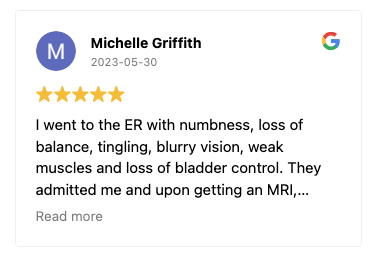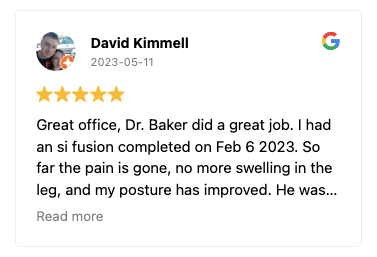Stem Cell Therapy ACL Tear: A Revolutionary Approach to Healing Without Surgery

An ACL tear can be a life-altering injury, especially for athletes and active individuals. The anterior cruciate ligament (ACL) is a crucial ligament in the knee joint, responsible for stabilizing the leg during activities like running, jumping, and pivoting.
When the ACL is torn, it can cause severe pain, instability, and difficulty with movement. Traditionally, ACL tears have been treated with surgery, often requiring a lengthy recovery process.
However, advances in medical technology have introduced stem cell therapy as a promising alternative treatment for ACL tears.
This innovative approach uses the body's own stem cells to aid in the regeneration and repair of damaged tissues, potentially offering a less invasive and more natural way to heal an ACL tear.
As more people turn to regenerative medicine, stem cell therapy is becoming a preferred choice for those looking to avoid surgery and recover faster.
Request an Appointment
What is an ACL Tear?
The anterior cruciate ligament (ACL) is one of the four main ligaments in the knee, responsible for stabilizing the joint and ensuring smooth movement.
An ACL tear occurs when this ligament is stretched beyond its capacity, often leading to a partial or complete tear.
These injuries are most commonly seen in athletes or individuals who engage in sports that involve sudden stops, changes in direction, or awkward landings, such as basketball, football, and skiing.
When the ACL is torn, individuals may experience a sudden “popping” sensation in the knee, followed by immediate pain and swelling.

The knee may feel unstable, making it difficult to walk or bear weight. ACL injuries can range in severity, from minor strains to complete tears, which often require more significant intervention.
A torn ACL does not heal on its own, and without proper treatment, it can lead to long-term instability and further damage to the knee joint.
Traditional Treatments for ACL Tears
Historically, the most common treatment for an ACL tear has been ACL surgery. In a typical case, the damaged ligament is replaced with a graft taken from the patient’s own body or a donor.
This surgery, known as ACL reconstruction, can be highly effective but often requires a long recovery period. After surgery, patients typically undergo months of physical therapy to regain full function in the knee.
However, ACL surgery isn't always necessary for every type of ACL injury. For partial tears or less severe injuries, conservative treatments such as rest, bracing, and physical therapy may suffice.
These approaches help reduce pain and improve strength in the surrounding muscles but don’t necessarily address the underlying damage to the ligament itself. This is where stem cell therapy offers a potentially groundbreaking alternative, allowing the body to regenerate and heal the damaged ligament without the need for invasive procedures.
The Role of Stem Cell Therapy in ACL Tears
Stem cell therapy is revolutionizing the way we approach healing for ACL tears, offering a regenerative solution that targets the root of the injury rather than just managing symptoms.
This therapy uses the body’s natural ability to heal by harnessing the power of stem cells—specialized cells that can develop into different types of tissues.
When applied to an ACL tear, these stem cells work to regenerate damaged tissue, promoting healing without the need for surgery.
The Role of Bone Marrow
In the context of an ACL tear, mesenchymal stem cells are often used. These cells are typically harvested from the patient’s bone marrow or fat tissue and are known for their ability to repair and regenerate damaged ligaments and cartilage.
Once injected into the affected area, the stem cells target the torn ligament, aiding in tissue regeneration and restoring function.
Unlike traditional ACL reconstruction surgery, which relies on a graft to replace the ligament, stem cell therapy encourages the body to heal itself, potentially leading to a faster recovery with fewer long-term complications.
Stem cell therapy also helps reduce inflammation and speeds up the healing process by releasing growth factors, proteins that stimulate tissue repair and encourage the regeneration of healthy tissue.
These growth factors play a critical role in promoting the healing of the torn ACL and minimizing the development of scar tissue.
This is particularly beneficial for those looking to avoid the long recovery time and potential complications associated with surgery.
While surgery has been the standard for severe ACL injuries, many patients are now turning to stem cell treatments as a non-invasive option that aligns with the body's natural healing mechanisms.
This form of treatment is gaining attention, especially among athletes and individuals seeking a less invasive yet effective method for ACL repair.
How Stem Cell Therapy Works for ACL Injuries
The process of stem cell therapy for ACL injuries involves several key steps, starting with the collection of stem cells from the patient’s body.
The most common source of these cells is bone marrow, although they can also be harvested from fat tissue. Once collected, these mesenchymal stem cells are processed and prepared for injection. These cells are highly versatile, capable of differentiating into various cell types—including those that can repair ligaments and soft tissues.
During the procedure, the stem cell injection therapy is administered directly into the damaged anterior cruciate ligament. The stem cells target the injured area, releasing growth factors that promote tissue regeneration.
Over time, these cells help form a new ligament, restoring stability and function to the knee. The patient’s body responds by accelerating the healing process, reducing inflammation, and facilitating the creation of healthy tissue to replace the torn ACL.
One of the key benefits of stem cell therapy is its ability to potentially shorten the recovery period. While traditional ACL surgery may require months of healing and physical therapy, patients undergoing stem cell treatment may start seeing improvements within several weeks.
The absence of major surgical intervention allows patients, including professional athletes, to return to their activities sooner. Athletes in sports that involve sudden movements, such as those with an abrupt landing during play, are increasingly turning to stem cell therapy as a faster way to heal.
In some cases, rabbit models have been used in research to explore the effectiveness of stem cells in treating ligament injuries.
These studies have shown encouraging results, demonstrating that stem cells can promote ligament regeneration and healing in ways similar to what is seen in human patients.
Clinical trials in humans continue to show promise, as stem cell treatment proves to be a viable alternative to surgery for many types of ACL injuries.
Patients seeking a less invasive solution to ACL tears are often advised to schedule an appointment today to explore the potential of stem cell therapy.
By leveraging the body’s own healing mechanisms, this therapy not only aims to repair the ligament but also to restore overall knee health, reducing the risk of long-term complications such as arthritis.
Stem Cells vs. ACL Surgery: Which is Better?
When it comes to treating an ACL tear, patients are often faced with two main options: traditional ACL surgery or stem cell therapy.
Each approach has its benefits, but choosing the right treatment depends on the severity of the injury, the patient's goals, and overall health.
ACL surgery is the traditional method, where the torn ligament is replaced with a graft from the patient's body or a donor. While surgery is often effective, it comes with significant downsides, including a lengthy recovery period and potential complications.
After surgery, patients may face weeks or even months of physical therapy, with the risk of developing arthritis or other long-term issues in the knee. Moreover, surgery requires a considerable period of immobilization, preventing patients from engaging in regular exercise and other physical activities during the healing process.
On the other hand, stem cell therapy offers a less invasive alternative. By injecting stem cells directly into the torn ligament, the treatment helps stimulate the growth of a new ligament.
This process encourages the body to repair the injury on its own, often leading to faster recovery times and less pain.
Professional athletes, who need to get back to their sports quickly, are increasingly choosing stem cell treatments to avoid surgery and reduce their recovery time.
One of the main benefits of stem cell therapy is that it addresses the injury without disrupting the surrounding tissue, as surgery might.
Stem cell treatments target the injured area directly, promoting healing while minimizing the risk of complications. Additionally, there’s no need for major incisions or grafts, reducing the likelihood of infection or complications associated with surgical procedures.
However, it’s important to note that not all ACL injuries can be treated with stem cell therapy alone. For severe tears, particularly those involving a complete rupture of the ligament, surgery may still be necessary.
In these cases, a combination of surgery and stem cell injection therapy may be recommended to aid in healing and speed up recovery.
Benefits of Stem Cell Therapy for ACL Tears
Stem cell therapy offers a range of advantages when treating ACL injuries, especially for individuals looking for a less invasive approach than surgery.
Many patients, including athletes with sports injuries, have reported generally positive results from stem cell treatments.
These results are largely due to the regenerative properties of mesenchymal stem cells, which help to repair the torn ligament by encouraging tendon bone healing and tissue regeneration.
In some cases, platelet-rich plasma (PRP) is combined with stem cell therapy to enhance the healing process.
PRP contains growth factors that stimulate tissue recovery, and when used alongside stem cells, it accelerates the regeneration of the damaged anterior cruciate ligament.
This combined approach can lead to a more comprehensive recovery, allowing patients to regain full knee function more quickly.
Unlike traditional anterior cruciate ligament reconstruction, where a graft is surgically implanted to replace the damaged ligament, stem cell therapy promotes natural healing within the ligament itself.
This method reduces the risk of complications like infection or the formation of scar tissue. Additionally, since the treatment uses cells from the patient's body, there is little to no risk of immune rejection, making it a safer option for many.
Stem cell therapy is particularly appealing in the field of sports medicine. Athletes, especially those who participate in sports with high physical demands, like football or basketball, benefit from the therapy’s ability to reduce recovery time and improve healing outcomes.
This allows them to return to their sport without the long downtime associated with surgery. Furthermore, early studies involving a rabbit model of ACL injuries have shown promising results, demonstrating how stem cells can promote faster ligament healing without the need for invasive procedures.
The body’s immune system plays a crucial role in the healing process, and stem cell therapies help by minimizing inflammation and reducing the immune response that often delays recovery in traditional treatments. By modulating the immune system’s activity, stem cells not only repair the ligament but also support the body in accepting the new tissue more effectively.
Clinical Trials and Research Supporting Stem Cell Therapy
Stem cell therapy for ACL tears is backed by a growing body of research and clinical trials. These studies have shown the potential of stem cell treatments to improve healing outcomes for patients with anterior cruciate ligament injuries.
One of the most compelling aspects of this therapy is the body’s natural ability to regenerate damaged tissue when assisted by stem cells.
Clinical trials have demonstrated that stem cells, particularly mesenchymal stem cells, can significantly speed up the healing process and reduce the risk of long-term complications like arthritis.
For example, in a rabbit model, researchers studied the effects of stem cells on ACL tears and found that the therapy promoted faster tissue regeneration compared to traditional treatments.
The stem cells not only helped to restore ligament function but also contributed to better overall tendon bone healing. These findings are crucial as they provide a foundation for the use of stem cell therapies in human patients.
In human trials, patients receiving stem cell injection therapy for ACL injuries have shown generally positive results. Many have experienced faster recovery times, reduced pain, and a lower likelihood of needing surgical intervention.
The ability of stem cells to adapt and promote healing in various types of sports injuries makes this therapy a revolutionary step forward in sports medicine. The potential for non-invasive recovery appeals to both athletes and everyday patients alike.
As research continues to evolve, more studies are being conducted to explore the long-term benefits of stem cell therapy for ACL tears.
These trials focus not only on immediate recovery but also on the prevention of future complications, such as chronic knee instability or further ligament damage. The results so far indicate that stem cell therapy may offer a safer and more effective alternative to traditional anterior cruciate ligament reconstruction.
Can Stem Cells Fully Repair an ACL?
One of the key questions surrounding stem cell therapy for ACL injuries is whether it can completely repair a torn ACL.
Unlike surgery, which replaces the damaged ligament with a graft, stem cell therapy encourages the body to heal itself by regenerating tissue.
While research has shown that stem cells, particularly mesenchymal stem cells, can aid in repairing a partially torn ligament, a complete tear may require more extensive treatment, such as surgery.
However, stem cell therapy can be a valuable part of the healing process, even in cases where anterior cruciate ligament reconstruction is necessary.
By promoting tissue regeneration and reducing inflammation, stem cells help speed up recovery and improve outcomes when combined with traditional surgical approaches.
Studies indicate that patients who undergo stem cell injection therapy alongside surgery often experience faster recovery and better long-term stability in the knee joint.
The ability of stem cells to form new, healthy ligament tissue is promising, but it’s important to understand that the results may vary depending on the severity of the injury.
In cases of a partial tear, stem cell therapy has shown remarkable potential for healing without the need for surgery. For more severe injuries, stem cell treatment may still play a crucial role in rehabilitation, offering a less invasive alternative to help restore a new ligament.
Who is a Good Candidate for Stem Cell Therapy?
Not everyone with an ACL tear is an ideal candidate for stem cell therapy. The best candidates are individuals with partial ACL tears or those who want to avoid surgery.
Professional athletes, in particular, are prime candidates for this therapy, as they often need to recover quickly and get back to their sports. Stem cell therapy allows athletes to heal naturally while minimizing downtime, making it a preferred option in sports medicine.
Patients with milder ACL injuries, who don’t require ACL reconstruction, often see the most benefits from stem cell therapy.
Those who experience ongoing knee pain from a previous injury or aging may also find relief through stem cell treatments. However, individuals with severe tears or ruptures may need to combine stem cell therapy with surgical intervention to achieve full recovery.
Since stem cells are derived from the patient’s body, there is little risk of rejection, making it a safe option for many.
Patients with conditions that could complicate surgery or those looking for a natural healing process might find this treatment particularly appealing. It’s important for patients to consult with their healthcare provider to determine if stem cell therapy is the right option for their specific injury.
How Much Does Stem Cell Therapy for ACL Tears Cost?
The cost of stem cell therapy for ACL injuries can vary based on several factors, including the type of treatment, the clinic, and the specific injury being treated.
On average, the price for stem cell treatment ranges from $3,000 to $10,000 per session. While this may seem high, it is important to weigh the potential benefits, such as reduced recovery time and the avoidance of surgery, against the cost.
Many clinics offer personalized consultations to provide patients with a clearer understanding of the total expenses.
For those interested in exploring stem cell therapy, it's recommended to schedule an appointment today to discuss potential outcomes and pricing.
Though insurance may not always cover stem cell treatments, the investment can lead to faster recovery and fewer complications compared to traditional surgery.
For individuals, especially professional athletes, who need to return to activity quickly, the cost of stem cell therapy may be well worth it.
The possibility of avoiding surgery, minimizing pain, and shortening recovery time make stem cell therapy an increasingly popular choice for ACL tear recovery.
What to Expect During and After Stem Cell Therapy
During stem cell therapy, the process begins with the extraction of stem cells from the patient's body—typically from bone marrow or fat tissue.
These cells are processed and prepared for injection. Once ready, the stem cell injection therapy is administered directly into the torn ACL, targeting the damaged tissue.
This process is minimally invasive and generally completed within a few hours, allowing patients to return home the same day.
After the injection, patients can expect the healing process to begin almost immediately. Unlike ACL surgery, which may require extensive downtime, recovery from stem cell therapy is much quicker.
Most patients experience slight pain or discomfort at the injection site, but this usually subsides within a few days. Over the course of several weeks, patients may notice a reduction in swelling and increased stability in the knee.
Patients are encouraged to engage in regular exercise and follow a personalized rehabilitation plan to maximize the benefits of the treatment. The use of stem cells accelerates the body's natural healing process, helping to reduce inflammation and promote tissue regeneration without the risks associated with surgery. Long-term outcomes are generally favorable, with many patients reporting lasting improvements in knee function and a reduction in pain.
The Future of ACL Repair: Stem Cells and Regenerative Medicine
The future of ACL repair lies in the continued advancement of regenerative medicine, and stem cell therapies are at the forefront of this revolution.
As research continues to evolve, stem cell therapy may soon become the standard for treating ACL injuries, offering a less invasive alternative to surgery that harnesses the body's own healing power.
This exciting field holds the promise of better outcomes, faster recoveries, and fewer complications for patients with ACL tears.
With the rise of platelet-rich plasma and stem cell treatments, the need for anterior cruciate ligament reconstruction may decrease in the coming years.
Researchers are already looking at new ways to improve the effectiveness of stem cell therapy, including combining it with other forms of regenerative medicine to achieve even better results.
As more patients experience the benefits of these treatments, the medical community is optimistic about the potential for stem cells to transform how we treat knee injuries.
Stem cell therapy not only addresses the immediate injury but also strengthens the knee for the future. By promoting the growth of a new ligament and supporting the surrounding soft tissues, stem cell treatments could help prevent further injuries and reduce the likelihood of developing arthritis or other joint problems down the road.
Innovation Treatments for Anterior Cruciate Ligament Injury
Stem cell therapy offers an innovative and less invasive alternative to traditional ACL surgery. For many patients, especially athletes and those looking for quicker recovery times, this approach provides a pathway to healing that leverages the body’s natural ability to regenerate tissue. By targeting the injured ligament with stem cells and promoting natural healing, stem cell therapy is helping patients regain mobility and return to their active lifestyles.
For more information or to explore whether stem cell therapy is right for your ACL injury, schedule an appointment today with Dr. Baker’s team of specialists. Learn more about the benefits and options for stem cell treatments at our Stem Cell Therapy for Knees page.
Dr. Abdul Baker - An Expert Neurosurgeon in Texas
Every neurosurgery has its complications; thus, a patient must choose the best neurosurgeon for himself. Dr. Abdul Baker is one of the most experienced and qualified neurosurgeons in Texas, treating patients for more than 16 years. People in Sherman, Plano, and nearby areas trust him for every kind of neurosurgery due to his surgical procedures’ 100% success rate. You may visit him if you need any consultancy or treatment regarding your brain and spine disorders.


Dr. Baker specializes in neurosurgery, neurosurgical spine surgery, neurotrauma, brain tumors, spinal tumors, and peripheral nerve damage treatment.









